Loving Clueless, being clueless, striving for something other than cluelessness
The White Pages summer movie series continues with another guest post, this one about the 1995 Amy Heckerling classic
Top notes: Hi from Garrett. I am still out of the country. Want to hear more about that? I’m doing a couple mini travelogues posts for paid subscribers. Are they worthy of your newsletter budget? I mean, I think so! There’s zero mention of the U.S. Presidential debate or recent U.S. Supreme Court decisions, so there’s that! But here on the main feed, we’re still deep into our summer movie series. This week, we’ve got a really great one— a funny, searching and warmhearted reflection on a life spent watching Clueless, first as a teen, and later as an educator. It’s by Kate Berger, an old friend and a hell of a great teacher (more on Kate’s bio below). I was able to compensate Kate for her time and wisdom thanks to the support of paid subscribers (another reason to give that whole paid subscription thing a whirl, but of course I’d say that).
I’m back next week. Unless I’m too jet lagged. We’ll see! In the meantime, enjoy this take on the second (?!?) summer movie series pick to feature a step-sibling romance.
Hey y’all. I’m Kate Berger and I’m a long time listener, first time caller here at The White Pages. I’ve been biding my time over the years, waiting anxiously each summer for Garrett to release his theme and movie list for the summer film series. Last year I submitted a pitch on a movie I was familiar with and in the end, it wasn’t meaty enough. This year though, well, bring on the 90s! When I saw the list, I couldn’t believe my eyes – CLUELESS. I knew this was my year. And here I am.
Clueless, a 1995 remake of Jane Austen’s Emma follows rich and beautiful 16-year-old Cher Horowitz as she navigates high school, makes over her new best friend, and tries desperately to fall in love.
Here’s the thing. I loved Clueless in high school, when I watched it on repeat for the entire 1998-1999 school year. Perhaps I became a bit obsessed because it was set in a world I could not even comprehend. I was born on a farm, grew up in central Illinois, and had never driven on a highway with more than two lanes per direction. So the idea of an urban high school with its diverse student body and exciting social scene was appealing.
And Cher, I adored her. We were opposites in every way – she was thin, I was overweight. She had blonde straight hair, I had frizzy red curls. She argued her way to good grades despite her cluelessness, and I just…got good grades. But her fierce confidence, unwillingness to accept no for an answer, and her extravagant lifestyle of urban wealth and excitement inspired me to follow her to LA. Like, literally. The “grassy knoll” where the stoners hang out in Clueless – actually the hill in front of the Tiger Cooler where I regularly ate lunch as a student at Occidental College. I’m not saying I chose my college because of Clueless. I’m just not saying I didn’t.
Is Cher the only reason I loved Clueless? Please! The best part of this movie is the snark packed into every scene – the film is just so quotable! The children hurl insults at one another to the point where you wonder why any of them even hang out. Here, a few of my favorites:
Tai: Why should I listen to you, anyway? You're a virgin who can't drive.
Cher: Would you call me selfish?
Dionne: No, not to your face.
Cher: I want to do something good for mankind or humanity or something.
Josh: How about sterilization?
Amber: Do you prefer fashion victim or ensemble-y challenged?
Looking back on Clueless now, 29 years after its release, I see a film that tried very hard to include diverse representation – there were two Black characters with their own positive storylines, a queer character who only got made fun of a little bit, and…that’s it. Ok. That doesn’t seem like they tried very hard. However, when you take into consideration the 90s mainstream cinema landscape, you can see that writer/director Amy Heckerling attempted to change the game a bit with her portrayal of Dionne, Cher’s Black best friend.
First, let’s look at what was happening in teen rom-coms and feel good movies in the late 90s and early 2000s. There were pretty much two portrayals of Black people. First, we saw film after film set in a Scary Black School™. In Save the Last Dance, Julia Stiles plays a brave young white woman forced to relocate from the suburbs to the south side of Chicago and attend a Scary Black School™ with metal detectors and gang members who go to nightclubs underage and also have guns. Then there is Sister Act 2, Back in the Habit, which stars Whoppi Goldberg, the benevolent fake nun forced to go undercover and teach at a Scary Black School™ where children behave poorly because they believe they will do nothing of consequence. This is because that is literally what their teachers say to them.
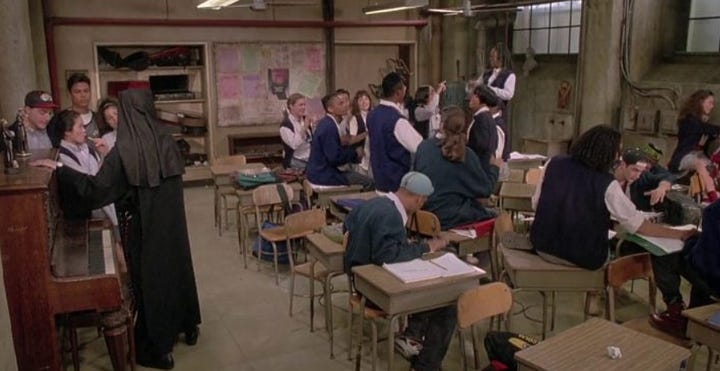
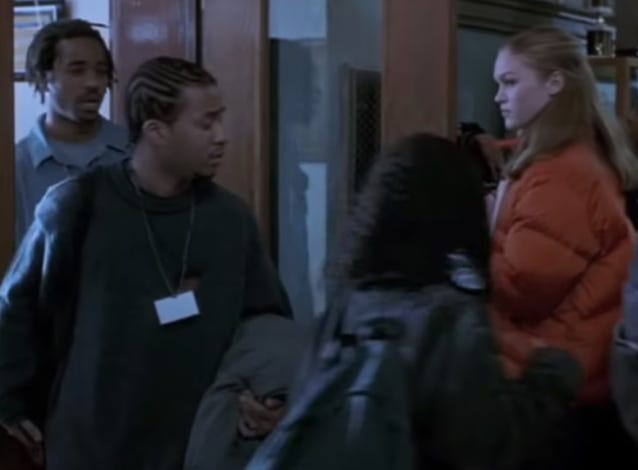
On the other side, we have rich Black children who attend Fancy White Schools™. As we see in the character Chastity in 10 Things I Hate About You or the essentially line-less character played by Lil’ Kim in She’s All That, Black people can be rich too! They can go to really good schools too! There is always at least one Black friend at a Fancy White School™. But here’s the thing. They are always portrayed as shallow and serve only to forward the narrative of the white protagonist.
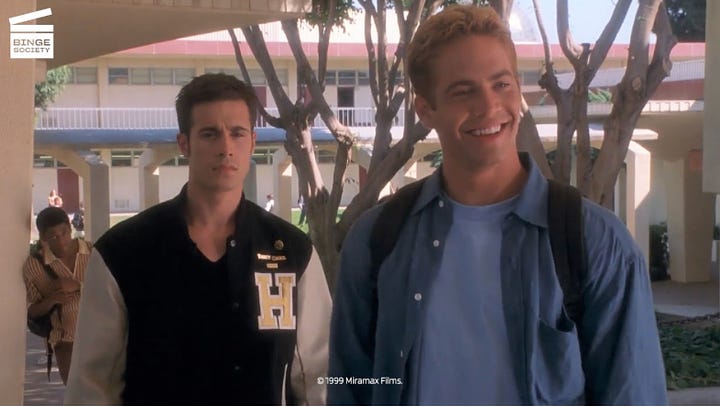
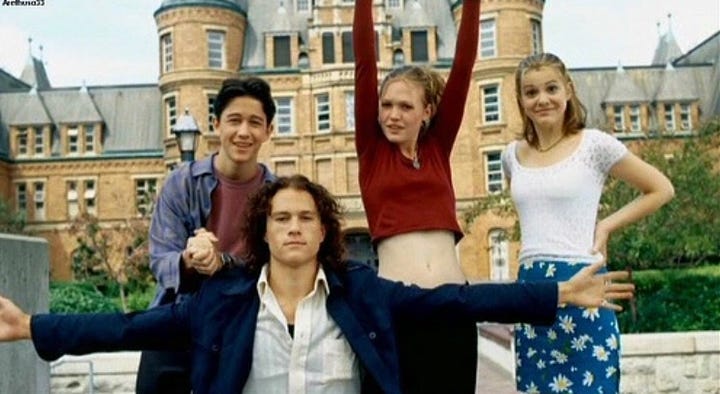
That is why Dionne, Cher’s best friend, was such a breath of fresh air for so many young Black female viewers. Honestly, when I was doing research for this piece, I expected to find the internet full of critiques of the tokenism and stereotypes rampant in the movie. And I did. But what I also found was piece after piece by Black women holding up Dionne as the lone example of a successful, positive, Black woman who didn’t have to code switch to be seen as valid.
Dionne, brought to life by Stacey Dash (who, despite playing a feminist icon, literally eschewed that label and became a Fox News pundit), was the main supporting character in the film. She had a dramatic yet sweet relationship with her boyfriend Murray and she was unapologetically black. According to Jazmin Kopotsha,
“She was as substantial a presence in the film as Cher Horowitz. Dionne’s blackness wasn’t the only thing about her. Her unapologetic 'sassiness' didn’t come across as a means to fulfill the caricature that is normally written for black actresses but rather an assertion of authority in a space that needed it – lol, Cher really needed it. Dionne also wore her hair in braids, which is a big identity-claiming move in itself as the majority of black female sidekicks in the white woman narrative tend to wear their hair in straight styles.”
Dionne was a rich Black girl at a Fancy White School™, but she wasn’t tokenized. She wasn’t just a sidekick – she became a role model for young Black teenagers looking for representation.
So does the brilliance of Dionne’s character mean that Clueless is an example of how mainstream cinema can think about race differently? As if! Because here’s what else happens with BIPOC characters in Clueless:
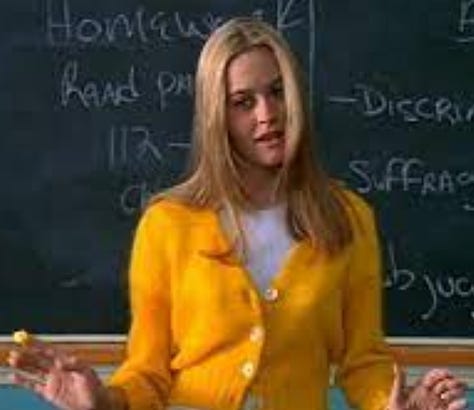
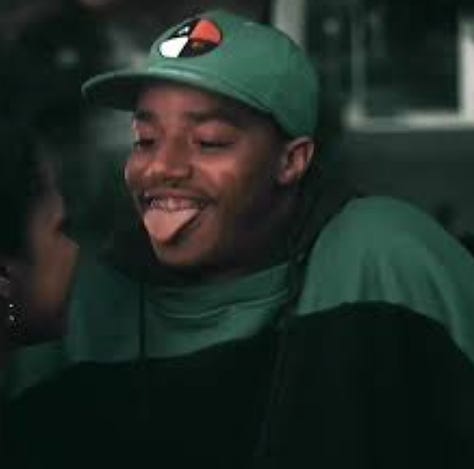
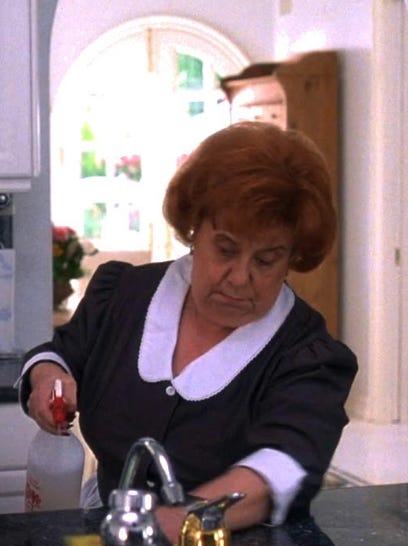
Dionne’s boyfriend, Murray, is portrayed as intelligent and wealthy, with an outstanding vocabulary. Here’s one of my favorite scenes from the film:
*Murray slides up next to Dionne and puts his arm around her*
Murray: Woman, lend me fi’ dolla’s.
Dionne: I have repeatedly asked you not to call me woman.
Murray: Excuse me, Ms. Dionne
Dionne: Thank you.
Murray: OK, but street slang is an increasingly valid form of expression. Most of the feminine pronouns do have mocking, but not necessarily misogynistic undertones.
However, a few scenes later, Murray’s smarts are negated by allegations of promiscuity. Dionne finds an unidentified braid in the back seat of Murray’s car and proceeds to ask him if he has been engaging in “vehicular sex” with someone who wears “polyester hair.” So, although Murray is initially depicted as well-read and insightful about sexism and language, his integrity is brought into question around promiscuity, a stereotype often ascribed to Black men.
There are also moments where the film makes light of Cher’s cluelessness around race and country of origin. Cher says to the Salvadorean housekeeper, “Lucy! You know I don’t speak Mexican!” and doesn’t understand why Lucy is upset. When her stepbrother explains that Lucy is, in fact, from El Salvador, Cher says, “So?”
At the beginning of the film, Cher is egregiously unprepared for a debate about the US response to Haitian refugees. She takes the podium in her government class, and likens the crisis to poorly calculating the number of attendees at a garden party. If, she argues, the government can just rearrange resources like her staff did at the party, “we could certainly party with the Haitians.” Her closing statement, met with raucous applause from her classmates is, “And may I remind you, it does not say RSVP on the Statue of Liberty.”
Clearly, Cher is clueless about more than love. And so was I, after watching this film so much I had it memorized. On one hand, I did see Dionne, a notable contrast to the other Black female characters in my favorite films. However, my understanding of the reality behind many of the jokes and obliviousness to the missed opportunities for this film to unpack white privilege meant it would take years for me to even begin to understand my role in upholding the systems that keep white people in positions of power over people of color.
I spent almost 20 years in public education, first as a teacher, then as an administrator, and then back to the classroom. In 2003-2005 I was a Teach For America teacher in rural Mississippi, where my students were proudly Black, unabashedly southern, and understandably skeptical of my Northern White Lady intentions. I worked hard to give them the education they deserved, and while I was moderately successful with my advanced Biology 2 students, I struggled mightily to get my students in my remedial Science Skills and Reasoning classes to care about mitochondria (the powerhouse of the cell), or anything else scientific. I wrote biology raps, assigned fun yet pedagogically questionable projects, and gave As on science fair projects that were clearly recycled from previous years. And I ended my two years in Mississippi disappointed in myself. I wasn't Whoopi. I wasn't Michelle Pfeiffer. I certainly wasn't Hilary Swank. (Ok fine, that movie didn't come out until 2007 but you get my point.) I wasn't even TFAmous.
My next teaching assignment was worlds away. I ended up at an off-brand charter in south central LA where my classroom windows were bullet proof and the charter management organization made a big deal of "serving underprivileged youth." They billed themselves as a Save the Kids from Scary Black Schools Charter Management Organization™. Yet half of the kids were from Baldwin Hills, a wealthy Black area of LA. Despite working at a Title I school, my kids were more Cher and Dionne, dripping with privilege and assuming their report card grades were a "jumping off point to start negotiations (Horowitz, 1995)" than Whoopi's class of rough-around-the-edges-but-eventually-grateful-for-the-inspiring-teacher-from-out-of-town students.
What did it mean for me, firmly entrenched in my White Savior Era, to be working at a school where students were expected to pay their own way on overnight field trips, to receive $100 gift cards for teacher appreciation week? Honestly, I resented the wealthier kids and became even more protective and obsessed with empowering my lower-income students to escape their circumstances. Now, nearly two decades after that surreal year in Los Angeles, I understand that I was actually projecting my upper-middle class understanding of a worthy, meaningful life on a group of kids who I knew very little about -- their hopes, their dreams, their families, and their cultural upbringings. And I regret that choice and am working hard to be a better White accomplice to BIPOC educational liberation.
Anyway, back to the movies. Clueless was hilarious to me when I was 17. And I’m not going to lie – it was hilarious when I rewatched it at 42. Maybe the real lesson here is that I shouldn’t be learning about race (or class, or gender, or sexuality, or…anything?) from major motion pictures, even if they are adaptations of classic works of literature. Especially if they are? I guess what I’m trying to say is that my ignorance about my own privilege and impact on kids is not Clueless’s fault. But thank goodness for nearly 30 years of life experience and media like The White Pages that have helped me get a little bit of a clue.
-Kate Berger is a self-described lifelong educator and mediocre powerlifter. She currently works in higher education at the Kempe Center of the University of Colorado and the Children’s Hospital of Colorado.
End notes (from Garrett)
You see what I mean? Fun stuff! I’ve read this many times myself and each time it inspires a new reflection about how I’ve perceived Blackness and class over the course of my life (especially as an educator). What a rich text, Clueless. Speaking of which, you know what would be a good song of the week? Coolio’s “Rollin’ With the Homies,” which in the film is played as a classic “look at the priviliged White kid try to rap” joke. Pretty fascinating trope, I think; probably worth a future movie series essay.
Speaking of which, see you back here soon! More movies to come in our summer series: Robo-Cop, Bonnie and Clyde, Napoleon Dynamite, The Wizard of Oz, Saturday Night Fever (or maybe none of those— I may get inspired to write about others instead). We’re running a lose ship over here at The White Pages, but it would still mean the world to us (by which I mean, um, me) if you could subscribe. Now for some Coolio (making a rare second appearance as a “song of the week/summer movie series” guest).
.

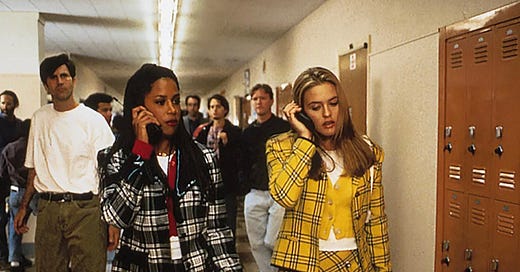



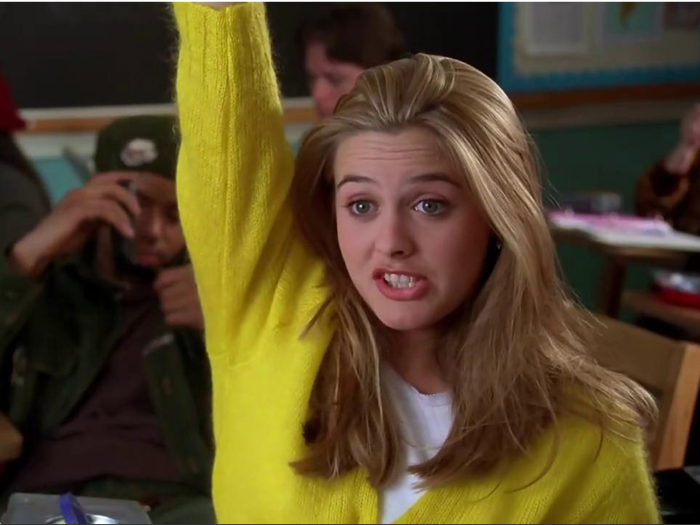
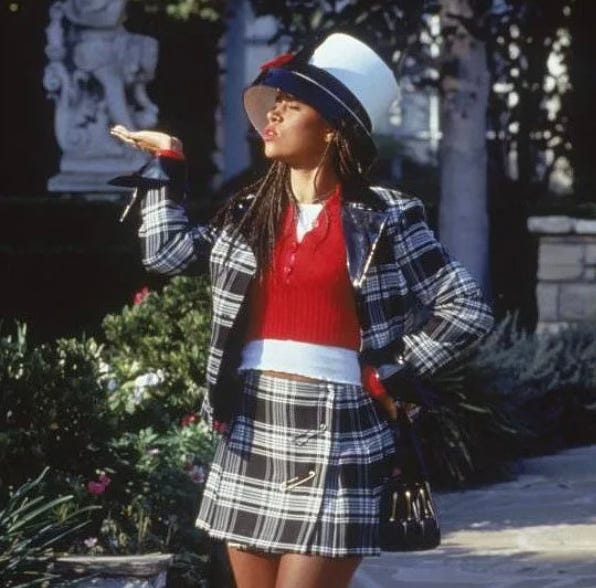
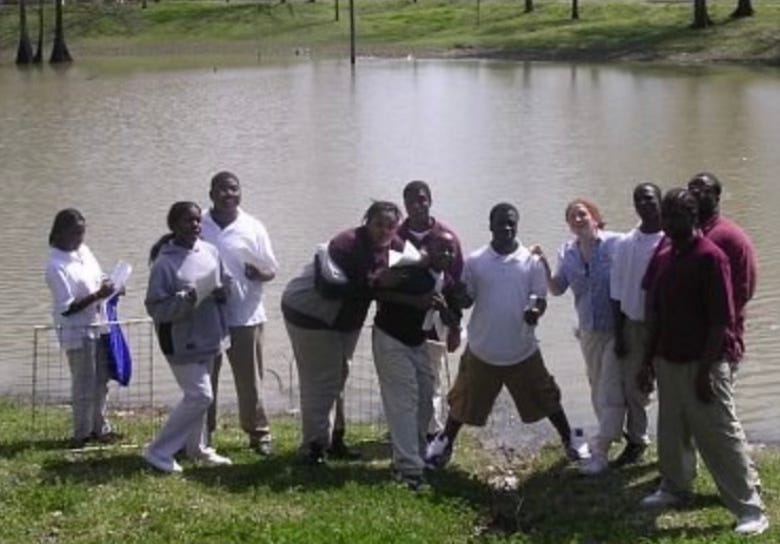

(I realize we're talking race, not sex or gender, and I realize I've come in to make a comment about a link, not the piece itself--but I keep looking at that list of "Notable TFA alumni" and counting the names. There are 25 listed. Four of them--to judge by the names--are women. So, you know, you might not be TFAmous just by dint of being female.)
Hi! My sister in law was a TFA teacher in Clarksdale MS 2008-2010. We visited her down there and it was such an eye opening, wonderful experience (white girl from Long Island).